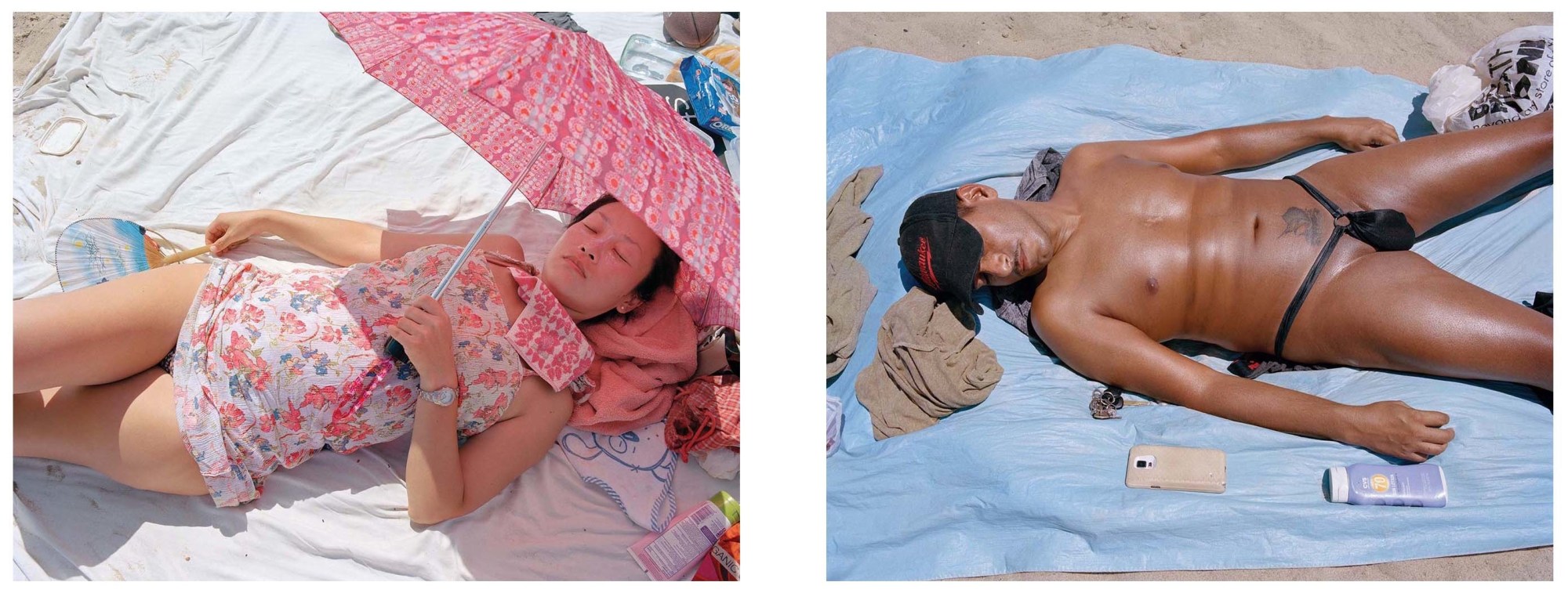In many ways, New York City beaches are microcosms of the city at large: they’re big, crowded, full of diverse people from all walks of life, and crazy. And much like New York’s streets, the city’s beaches — and the vast array of humans who populate them — have been attracting photographers for decades. A twentysomething Diane Arbus took some of her earliest images while stalking the shores (and freak shows) of Coney Island; Harvey Stein dedicated an entire book to the black-and-white portraits he made there over 40 years. Caitlin Teal Price has seen these pictures, but didn’t draw inspiration from them while making Stranger Lives, her new photobook of Coney Island and Brighton Beach sunbathers. “I was more inspired by the people,” Price explains.
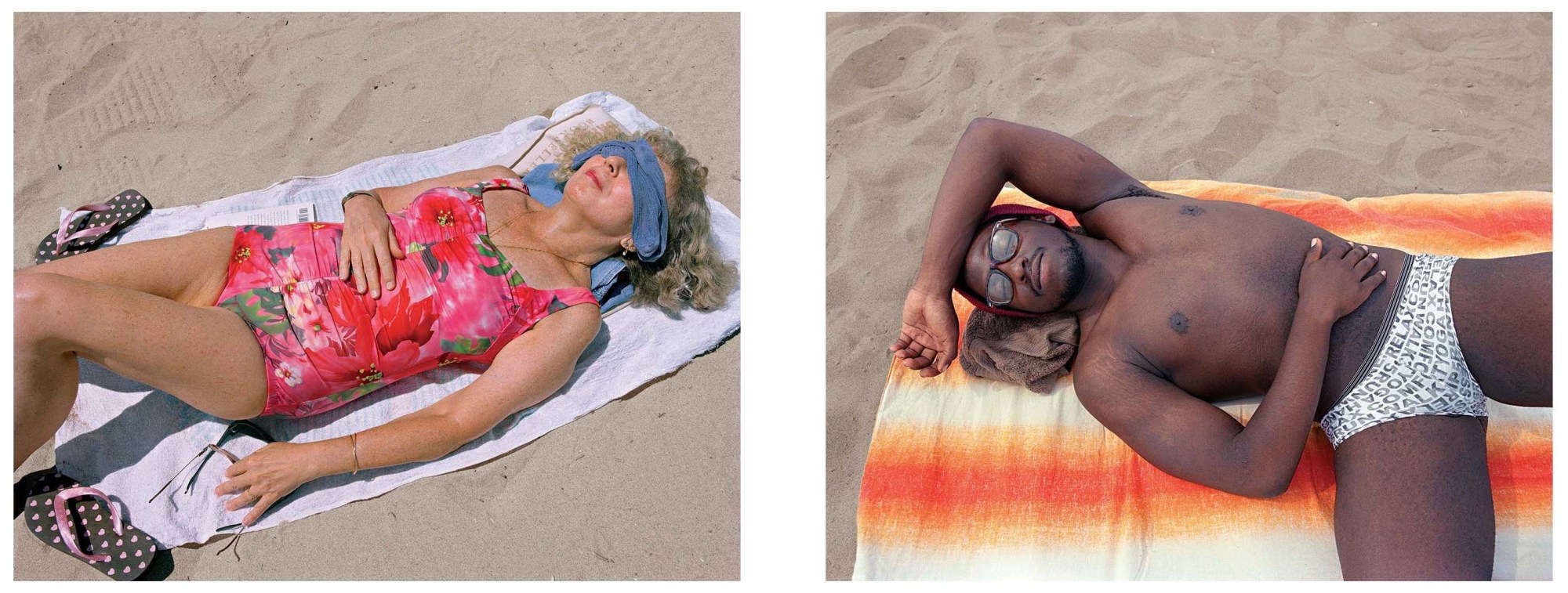
Stranger Lives — a collection of 70 portraits created between 2008 and 2015, using a 6×7 camera and Kodak Portra film — is a taxonomy of sunbathers. Price walked along the beach, approached people she felt compelled by in the moment, took a few photographs, and kept things moving. But in creating this kind of anthropological document, Price also captures the strangeness, scrappiness, color, and humor that makes New York and its people so fascinating. Here, most of us don’t load up the car with beach supplies; we grab whatever’s around and jump on the subway — that means bed sheets instead of towels, purses instead of beach bags, bras and boxers instead of swimsuits, bodega chips instead of sandwiches packed in a cooler. One guy Price photographed is straight up wearing jeans; another is sunbathing on a swath of transparent plastic wrap.
As winter arrives (and brings out its own breed of everyday eccentricity), we spoke with Price about capturing seven summers of sunbathers.

What first got you interested in shooting sunbathers?
It was an interest in the people, honestly. I went to the beach and I just kind of wanted to stare at everyone; I was interested in the stories I could find, could draw out from the people. I was curious about them, truly.
What drew your eye when you were shooting?
It was kind of intuitive, but there are just so many people on Coney Island and Brighton Beach. So what would initially draw me close to them was color, mostly, or someone who was super shiny. So I’d kind of weave my way through people and assess once I got a little closer to that person who drew me to them. Then I’d make a quick, split-second decision about whether or not I was going to ask. And I wanted people who were interesting — I didn’t want to get the plain jane, or to photograph my mom over and over again, you know? There had to be something quirky about them; I was drawn to people who I didn’t know. And sometimes I would have to walk away, take a deep breath, and get up enough courage to actually go to them. It was super hard to do — really intimidating to approach these strangers.
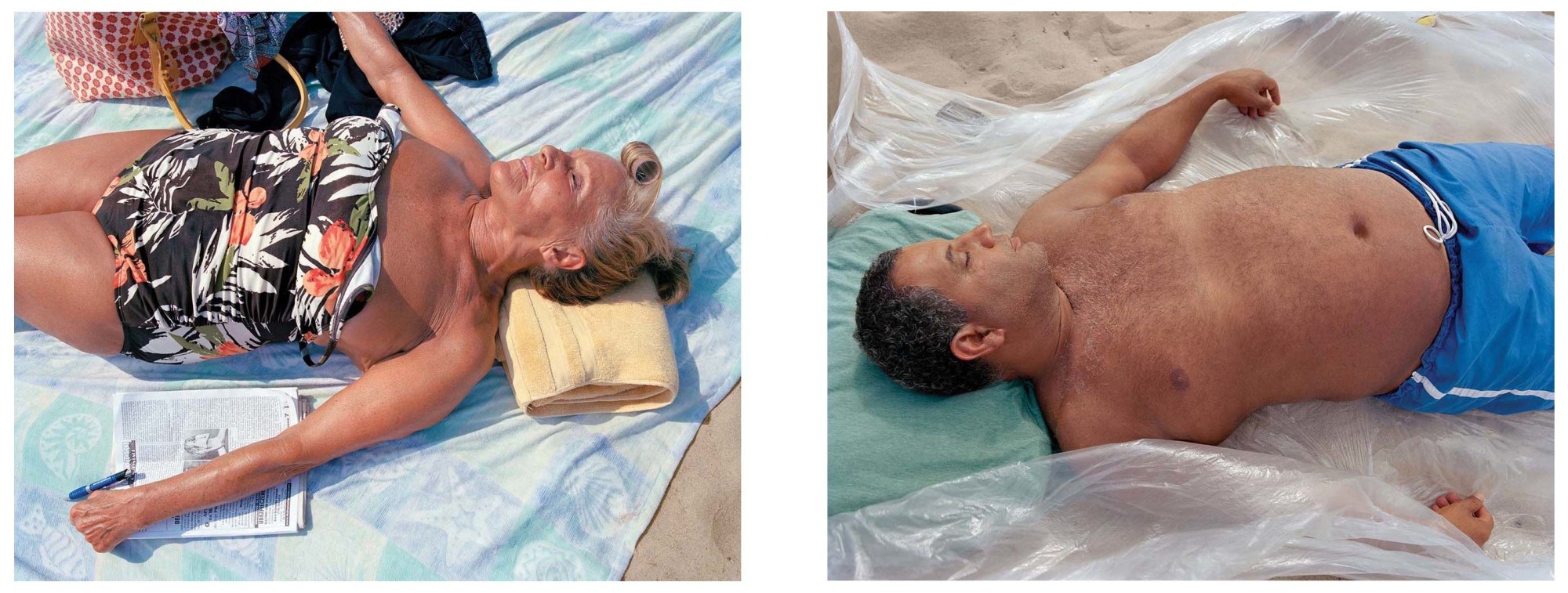
Were people generally willing to have their pictures taken? There’s always a little vulnerability, but New York beaches are pretty uninhibited spaces.
Definitely, and that’s what makes it such an amazing place. Because there are no rules and people really don’t give a shit. It’s awesome; they just kind of roll off the train and onto the beach. There was about a 50% yes rate. At the beginning, it was much slower because I was really bad at my approach, but then I got better at how I asked. And, of course, the best people always say no.
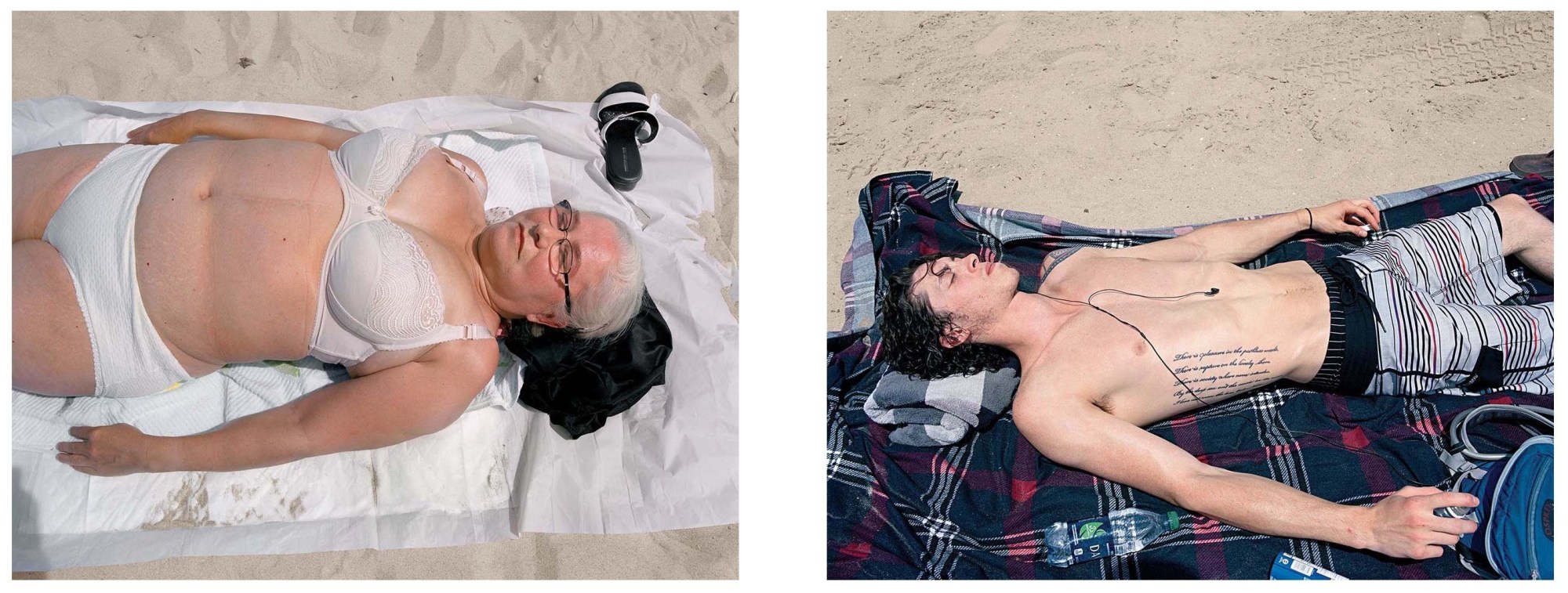
What was your approach? I’ve been thinking about it and I don’t know if I’d be able to convince anyone.
I have this outfit I always wear: this non-descript, flowing red beach dress. It’s not super cute, but it’s visible, which is the reason I chose red — so people could kind of see me walk up to them, see me walk away, spot me down the beach day after day. I’m not sure if it actually felt less threatening to anyone, but it made me feel better. And what I’d say was very simple; I’d smile a lot and say, “Excuse me, do you mind if I take a couple photographs of you? I’m doing a project of people laying on the beach. You can just lay there, ignore me, I’ll be gone in a minute.” It’s very simple. And I wouldn’t ever approach anybody who wasn’t already laying in that position, so I never asked anybody to move. Which was actually kind of good, because there are so many people on the beach, it’s kind of overwhelming. How do you choose, you know? So it kind of cut my pool at least in half.
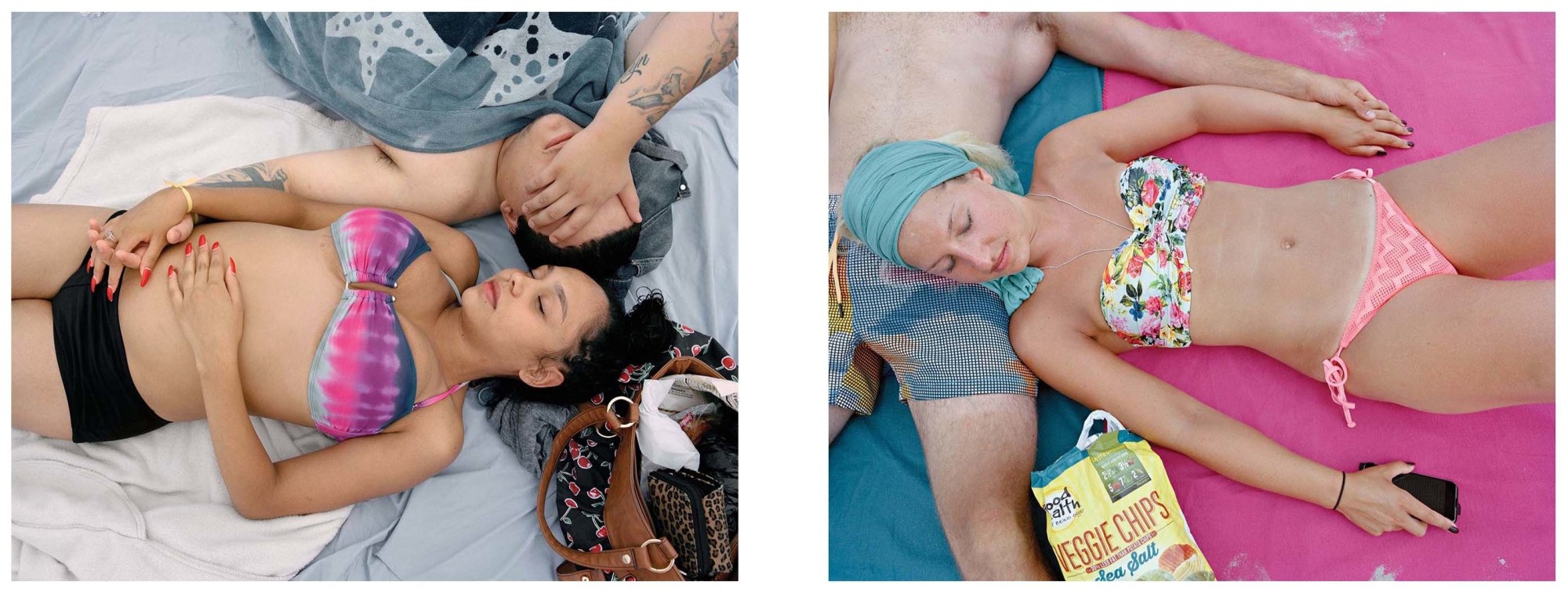
It’s funny to see New Yorkers at the beach because there’s always something so scrappy about it. And even though I’m sure these pictures were made quickly, all of the elements almost reveal things about people’s personalities.
They’re really fun to stare at. Skin was another draw for me, too. Some people have these crazy scars and tattoos. There’s one scar I’m kind of scared of, but it’s great. This man has a cross necklace and is laying on a floral sheet that looks like his grandmother’s. He’s got these scars on his legs and arms — some of them look fresh and self-inflicted, others could be a skin graft. I also liked the way people sort of matched their towels. But these interactions were so brief; what you see is pretty much what I saw, or ended up seeing after the fact. I’m still finding details I haven’t seen before.

Do you plan to return next summer?
I think I’m going to, yeah. I might just keep this going for as long as I can stand it. It’ll be interesting to see how things change over the years, too. Phones and things people can’t survive without will change.
‘Stranger Lives’ is available for pre-order through Capricious. Price will be signing copies today at Upshur Street Books in Washington, DC. More information here.




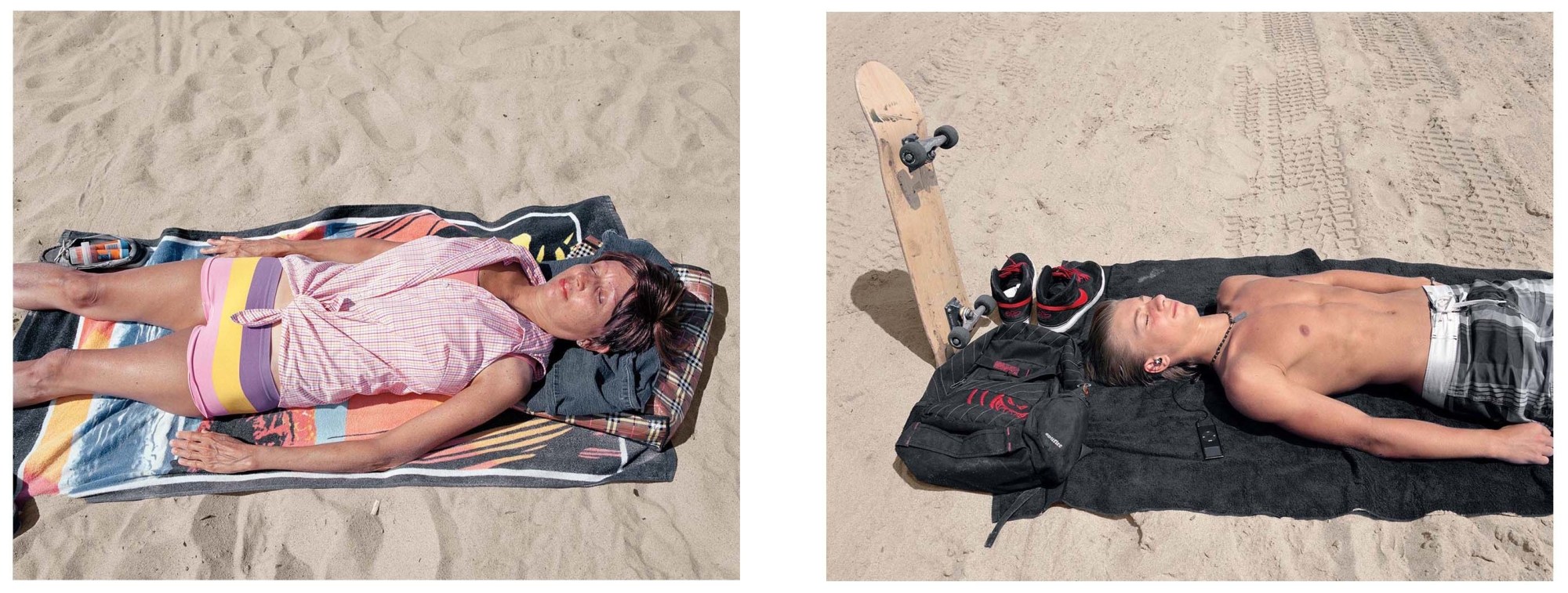

Credits
Text Emily Manning
Photography Caitlin Teal Price
